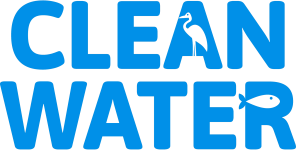As climate change, urbanization, and pollution threaten global ecosystems, the need for waterbody restoration services has become urgent. These services focus on rehabilitating degraded lakes, rivers, wetlands, and ponds, ensuring they can once again support biodiversity and provide clean water. Innovative organizations like Clean Water Solutions are leading this transformation with scalable and eco-friendly methods, integrating technology and community efforts to achieve long-lasting results.
Why Waterbody Restoration Services Matter
Waterbody restoration services address critical issues like water pollution, loss of biodiversity, and groundwater depletion. They restore natural processes, improve water quality, support aquatic life, and strengthen communities against climate risks. Urban waterbodies, often reduced to sewage dumps, require interventions beyond conventional treatment plants. Nature-based approaches adopted by waterbody restoration services are cost-effective, low-maintenance, and sustainable, making them a preferred choice globally.
These services also contribute to human health by reducing waterborne diseases, lowering urban heat islands, and providing recreational spaces. Their implementation enhances tourism, increases land value, and supports agricultural sustainability by replenishing groundwater reserves.
How Clean Water Solutions help in Water body Restoration Services
Clean Water Solutions exemplifies how innovative waterbody restoration services merge technology with ecology. Founded by Priyanshu Kumath, an IIT Bombay graduate, the company rejuvenates polluted lakes using floating wetlands, solar aerators, and microbial cultures. These nature-based products enhance water quality, restore biodiversity, and beautify waterbodies while fostering community pride.
The impact is remarkable: 27+ lakes restored across 9 states, over 2 billion liters of water treated, and 20+ types of floating islands and aerators deployed. Projects like Annapurna Lake’s revival turned foul, stagnant water into a clean ecosystem meeting drinking standards, proving the effectiveness of waterbody restoration services. Clean Water’s work at Hauz-i-Shamsi in Delhi and the Sabarmati River in Ahmedabad further showcases the scalability and visual appeal of these innovations.
Broader Impact on Society and Environment
The benefits extend beyond ecological revival. Waterbody restoration services:
- Improve water quality through natural pollutant removal.
- Revive aquatic ecosystems, attracting fish, birds, and other wildlife.
- Recharge groundwater to support agriculture and urban needs.
- Engage communities for long-term sustainability.
- Boost climate resilience, reducing flood risks and urban heat.
Additionally, these services create green jobs, empower local artisans to build floating structures, and raise awareness about the importance of water conservation.
Global Relevance and Market Growth
Worldwide, the demand for waterbody restoration services is growing due to climate adaptation goals, stricter regulations, and the UN Decade on Ecosystem Restoration. While global companies like AECOM work on large-scale projects, Clean Water Solutions stands out for its frugal, scalable innovations tailored to India yet replicable globally. With governments increasing investments, this sector is projected to see exponential growth.
Why Water Body Restoration Services approach works
Unlike capital-intensive plants, waterbody restoration services by Clean Water Solutions use floating wetlands that harness natural cleaning processes. Microbial colonies break down pollutants, while solar aerators maintain oxygen-rich environments for aquatic life. This eco-friendly, visually pleasing method aligns with circular economy principles and sets a new benchmark for restoration solutions.
Collaborations and Scaling Up
Clean Water collaborates with governments, CSR departments, NGOs, and local communities, ensuring project ownership and maintenance. These partnerships have enabled scaling across multiple states. With a vision to rejuvenate over 1 lakh waterbodies in the next decade, Clean Water demonstrates how waterbody restoration services can scale effectively to meet national and global challenges.
Future Innovations and Vision
Looking ahead, Clean Water Solutions aims to integrate AI, IoT, and real-time monitoring to optimize restoration efforts. These technologies will improve pollutant tracking, biodiversity assessments, and project transparency. Expanding global collaborations will accelerate adoption of waterbody restoration services across different geographies.
The Role of Research and Education
Research partnerships with universities and environmental institutes strengthen Clean Water’s solutions. Educational campaigns create awareness among citizens, encouraging them to become stakeholders in the restoration process. This dual approach—science-backed technology and active community engagement—ensures measurable and lasting impact.
Conclusion
In the face of escalating environmental challenges, waterbody restoration services have become indispensable. Organizations like Clean Water Solutions prove that with innovation, community participation, and vision, degraded waterbodies can be revived at scale. Their mission to restore lakes across India serves as a blueprint for global adoption.
Investing in waterbody restoration services is an investment in a sustainable future. By reviving natural assets, improving public health, and strengthening climate resilience, these services pave the way for environmental and societal transformation—one restored waterbody at a time.

